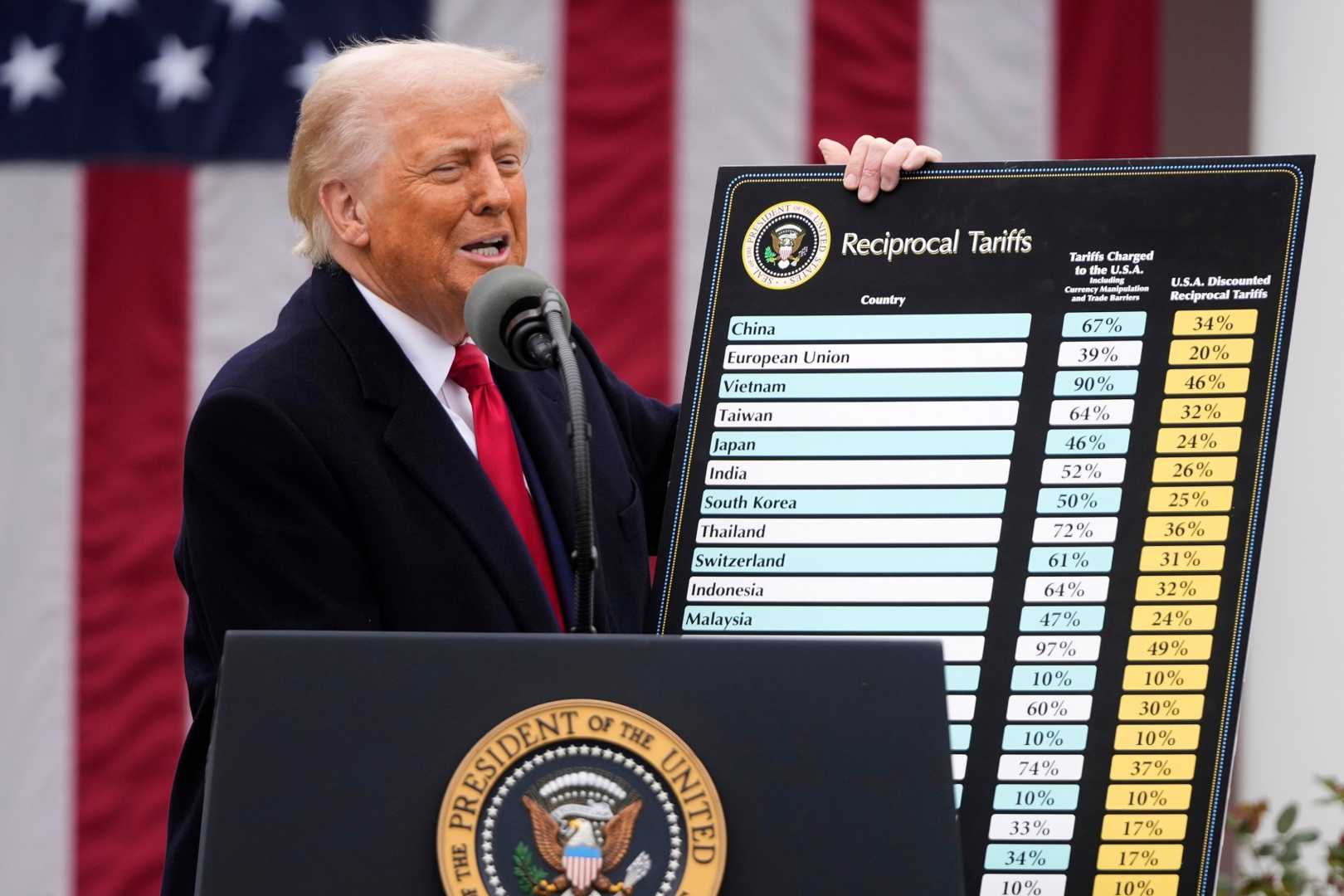Business
Trump’s New Tariffs Spark Global Economic Concerns

WASHINGTON, D.C. — President Donald Trump announced sweeping new tariffs on imports from over 180 countries during a press conference in the Rose Garden on Saturday, April 5, 2025. The tariffs, ranging from 10% to 49%, are intended to address what Trump describes as unfair trade practices that disadvantage American businesses.
The administration’s approach, however, has drawn criticism for its reliance on a simplified formula that equates trade deficits with tariffs imposed by other nations. According to Mike O’Rourke, chief marketing strategist at Jones Trading, “There does not appear to have been any tariffs used in the calculation of the rate.” O’Rourke noted that the Trump administration is targeting countries with large trade surpluses relative to their exports to the U.S.
Economic analysts are concerned that these tariffs—often dubbed reciprocal—will not only raise prices for American consumers but may also trigger retaliatory actions from affected nations. “The more concerning issue is that these large across-the-board tariffs incentivize our trading partners to retaliate against us,” said John Dove, an economics professor at Troy University.
In essence, the Trump administration’s calculation for determining the tariffs includes broad categories such as currency manipulation and regulatory constraints, rather than straightforward tariff comparison, which sparked confusion among economists and policymakers. The tariffs appear to be a means to address multiple grievances against various countries, including China, which has long been criticized for its trade practices.
“When I go to the store and buy groceries with cash, I run a trade deficit with my grocery store, but does that mean that I’m worse off? Obviously not,” dove continued. Such analogies aim to highlight the complexities of trade deficits that may not justify punitive tariffs.
The tariffs are expected to generate significant revenue for the U.S. government, potentially upwards of $400 billion according to JP Morgan chief economist Michael Feroli, but they may also impact consumer prices by 1-1.5%. This rise in prices could lead to decreased purchasing power for American households.
Furthermore, the tariffs could heighten tensions with American allies. Japanese officials have urged the Trump administration against unilateral action, stating, “We will continue to strongly urge the U.S. to reconsider its actions,” reflecting the global apprehension surrounding the impact of the tariffs.
As Wall Street reacted negatively to the tariff news, stock indexes in Asia, including Japan‘s Nikkei 225 and South Korea’s Kospi, dropped sharply by over 4%. The S&P 500 and Nasdaq futures also indicated declines ahead of the market opening following Trump’s announcement.
In his remarks, Trump defended the introduction of tariffs as necessary for protecting American jobs and manufacturing. He stated, “If you make your car in the United States, there is no tariff.” However, the sincerity and efficacy of such tax policies have been met with skepticism by several lawmakers, including former Vice President Mike Pence, who criticized the tariffs as being excessively punitive.
Amidst growing concern about potential economic fallout, some Senate Republicans are considering measures to block the tariffs. The Senate voted 51-48 to pass a resolution stopping Trump’s tariffs on Canadian products, although it is unclear if the measure will gain traction in the House.
Trump’s attempts to rectify trade imbalances have previously been characterized as a complex balancing act of domestic desires versus international ramifications. As initial reactions pour in from both sides of the aisle and international communities, the full scope of economic impacts remains to be seen.












